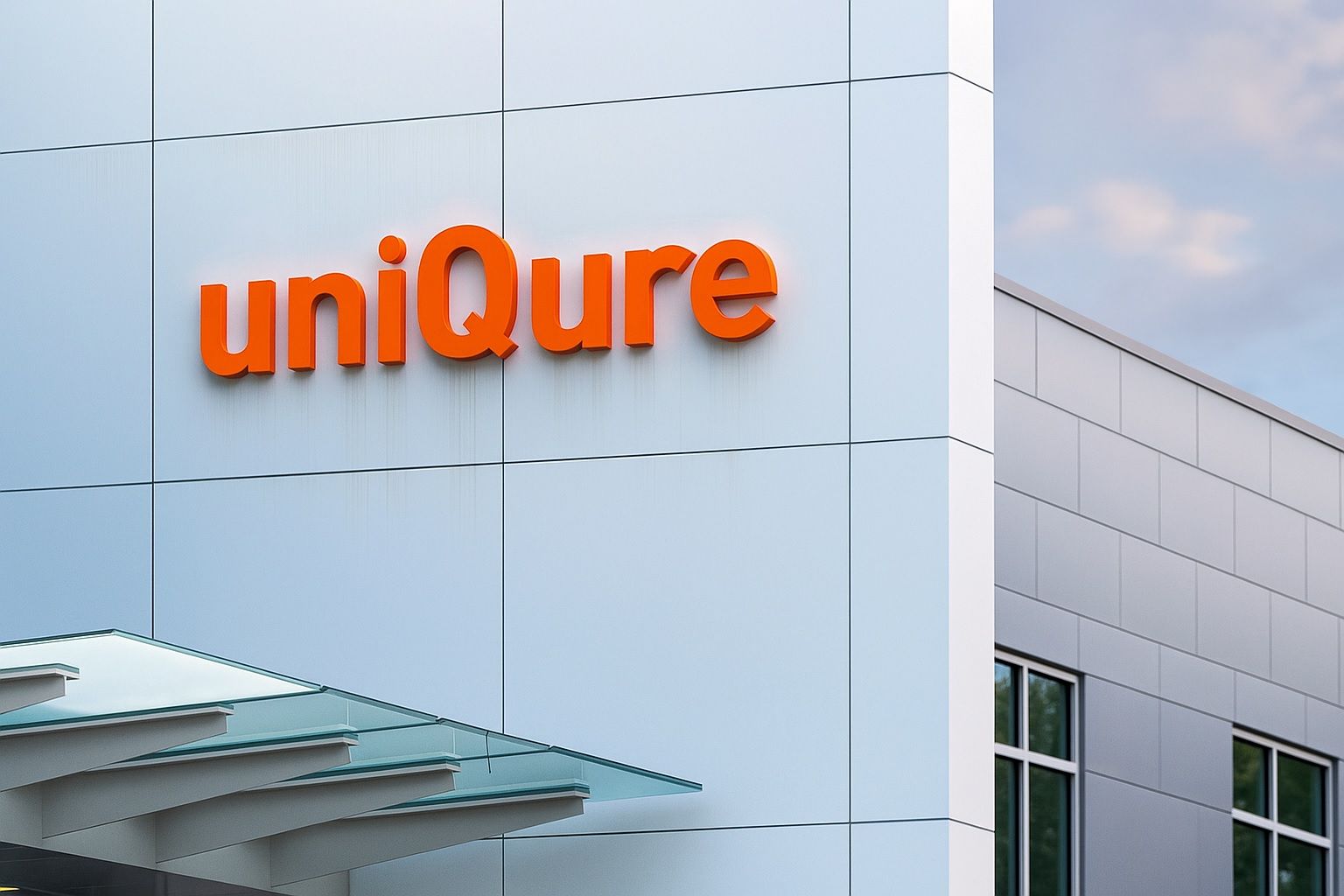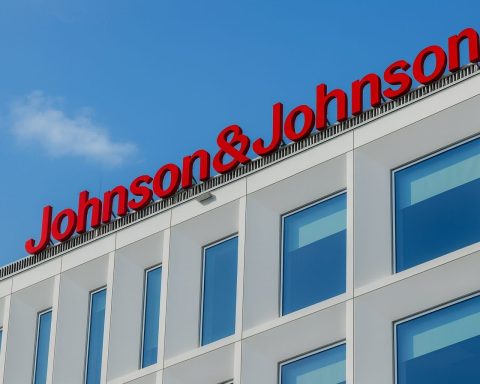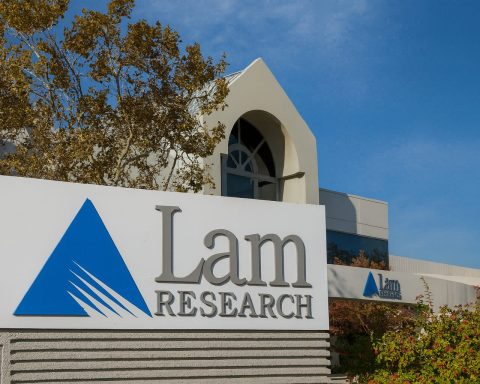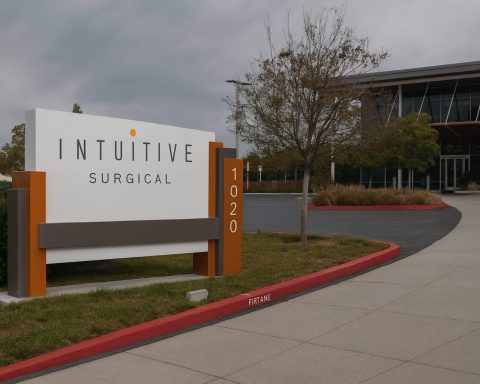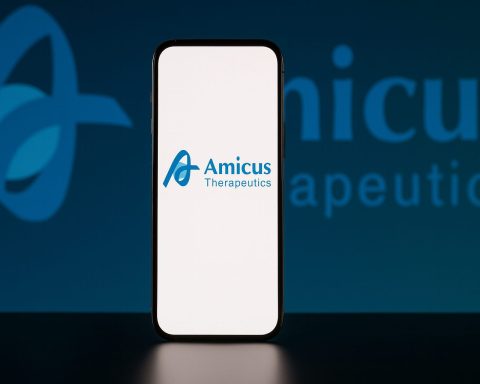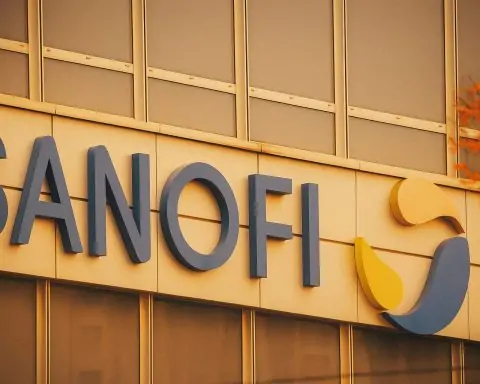- Company & Focus: UniQure N.V. is a Dutch-American biotechnology company (NASDAQ: QURE) specializing in gene therapies. It developed the first approved gene therapy for hemophilia B (marketed as Hemgenix by partner CSL) and is advancing a pipeline for Huntington’s disease, refractory epilepsy, ALS, Fabry disease and other severe disorders [1].
- Stock Price (Nov 3, 2025):$23–24 per share (midday) – a dramatic drop (~60–65% in one day) after a regulatory shock. The stock had closed at $67.69 on Oct. 31, 2025 [2] and was up nearly 200% in September after positive trial results [3], before plunging on Nov. 3 due to an FDA setback [4].
- Market Cap & Shares: ~$1.3 billion market capitalization post-drop (from ~$3+ billion before). Shares surged over 500% in the six months leading up to October on Huntington’s data momentum [5]. Despite the recent crash, the stock remains well above its 52-week lows (it traded in the teens earlier in 2025).
- Recent News: Nov 3, 2025: UniQure announced the FDA no longer considers current Huntington’s disease trial data sufficient for approval, clouding the timeline for its lead gene therapy (AMT-130) [6] [7]. Late Sep 2025: UniQure raised $345 million in an upsized public stock offering at $47.50/share to fund commercialization and R&D [8] [9]. It also refinanced $50M of debt and secured up to $125M in additional non-dilutive funding around the same time (via a Hercules Capital loan facility).
- Financials (latest quarter): For Q2 2025, revenue was $5.3 million (mainly Hemgenix licensing/royalties), down from $11.1M in Q2 2024 [10]. Net loss was $37.7M (improved from a $56.3M loss a year prior) [11]. Cash was $253.8M as of June 30 [12] – bolstered to ~$550M after the September equity raise. UniQure has no large product revenue yet and remains dependent on partner royalties and its cash reserves to fund R&D.
- Leadership & Outlook: CEO Matt Kapusta leads the company, which has received FDA Breakthrough Therapy and RMAT designations for AMT-130 (Huntington’s) [13]. Analysts had a Strong Buy consensus on QURE prior to the FDA news, with an average 12-month price target in the $70–75 range [14]. However, the recent regulatory surprise introduces new uncertainty (see below).
Stock Performance: Skyrockets and Crashes
UniQure’s stock has been on a wild ride in 2025. After starting the year in the mid-teens, QURE shares skyrocketed through mid-2025 on hopes for its Huntington’s gene therapy. The rally hit a fever pitch in late September when Phase 1/2 trial data showed a remarkable 75% reduction in disease progression with AMT-130 – news that caused the stock to surge almost 200% that month [15]. By late October, QURE was hovering around $68–$70, up roughly 300–500% from spring levels.
However, in the past few days the stock’s momentum sharply reversed. On Monday, Nov 3, 2025, UniQure revealed a major FDA setback (detailed below) that sent investors fleeing. Shares plunged ~60–67% in a single session, collapsing from the high-$60s to the low-$20s [16]. In pre-market trading that morning, QURE was down over 58% on the news [17], and by mid-day it traded around $23 (a 65% one-day drop [18]). This wipeout has essentially “reset” the stock to its levels from early September, erasing much of the Huntington’s euphoria. Volatility remains extreme – a true roller-coaster for investors. Notably, even after this crash, QURE is still above where it began 2025, reflecting how far it had run up prior to the news. The recent collapse underscores the binary risk inherent in biotech: fortunes can change overnight on regulatory decisions.
Major Recent News & Catalysts
FDA Bombshell (Nov 3, 2025): UniQure announced that at a recent pre-BLA meeting, the FDA “no longer agrees” that the current Phase I/II data for its Huntington’s disease gene therapy (AMT-130) are adequate to support a marketing application [19]. This is a stunning about-face by regulators – described by UniQure as a “key shift from prior communications” over the past year [20] [21]. In late 2024 and throughout 2025, the FDA had indicated that the single Phase1/2 study (with external control data) could potentially suffice for an accelerated approval filing. Now, suddenly, the agency is demanding more: essentially saying the existing trial evidence is not enough for approval. “We are surprised by the FDA’s feedback… a drastic change from the guidance [provided earlier],” said CEO Matt Kapusta in a press release [22].
This regulatory shock has thrown UniQure’s timelines into disarray. “The timing of the BLA submission for AMT-130 is now unclear,” the company admitted [23]. Management plans to urgently engage with the FDA to find a path forward, potentially exploring whether additional analyses or an interim data cut could address the agency’s concerns [24]. If not, UniQure may be forced into conducting a new Phase III or gathering more long-term data, which could delay its first major product launch by years. The FDA’s feedback is especially confounding given that AMT-130 had earned Breakthrough Therapy status in April 2025 based on the very same Phase1/2 results [25], underscoring how unexpectedly the regulatory winds have shifted.
The stock’s crash on Nov 3 was directly triggered by this news. “The update means the potential timing of a BLA submission for AMT-130 is uncertain and whether or not more trials or data will need to be collected,” noted Cantor Fitzgerald analyst Kristen Kluska, reacting to the FDA meeting outcome [26]. Investors who had bid up QURE on hopes of a 2026 product launch were clearly blindsided. UniQure emphasized that it remains committed to bringing AMT-130 to patients and will also pursue parallel discussions with European and UK regulators in case those pathways face fewer hurdles [27]. But the U.S. FDA decision is critical, and for now it introduces significant uncertainty.
Upcoming Earnings (Early Nov 2025): Amid the FDA drama, UniQure is also due to report its third quarter 2025 earnings (scheduled for Nov 4, 2025). Analysts had expected a quarterly loss around ~$0.85 per share on ~$4–5 million revenue [28], similar to prior quarters. Any commentary on the earnings call will likely be dominated by the Huntington’s regulatory issue. Investors will watch for management’s plan B – e.g., will they consider running a confirmatory Phase 3 trial, how long of a delay might result, and what this means for cash burn. The Q3 results themselves (which have not yet been announced as of Nov 3) may take a back seat given the seismic news. Prior to this, UniQure’s Q2 2025 results in late July showed declining revenues and ongoing losses, but a narrowed net loss on reduced expenses [29] [30]. The company has been transparent that it does not expect substantial product revenue in 2025, with Hemgenix royalties ramping only gradually. Thus, the investment thesis rests heavily on pipeline progress – which is why the FDA’s verdict has such impact.
Recent Financing Moves (Sept 2025): On September 29, 2025, UniQure closed an upsized public equity offering to capitalize on its high-flying stock. It sold ~6.74 million new ordinary shares at $47.50 (plus ~0.53M in pre-funded warrants) – raising $345 million gross proceeds [31] [32]. The offering was initially targeted at $300M but was increased due to strong demand (underwriters exercised their full option) [33]. Management indicated these funds will bankroll commercial launch preparations for AMT-130, further clinical development of other pipeline candidates, and general corporate purposes [34] [35]. In parallel, UniQure announced a refinancing of an existing $50M debt and a new credit facility with Hercules Capital providing up to $175M in additional capital [36] [37]. These steps significantly strengthened the balance sheet – an important cushion now that regulatory delays could postpone revenue. Essentially, UniQure raised enough cash to operate for several years, reducing near-term financing risk.
Pipeline Updates: Aside from Huntington’s, UniQure has been progressing other programs:
- In Fabry disease (AMT-191 gene therapy), the company presented encouraging initial Phase I/II data in September. All patients in the high-dose cohort showed 27× to 208× increases in the missing enzyme activity, enabling them to come off enzyme replacement therapy [38] [39]. The early results suggest AMT-191 could be a one-time treatment for Fabry, and no serious safety red flags emerged (some manageable liver enzyme elevations) [40]. Updated data is expected in 1H 2026. This is a positive secondary catalyst, though far behind the HD program in timeline.
- In refractory temporal lobe epilepsy (AMT-260), UniQure dosed its first patient in 2024 and is conducting a Phase I/II trial (GenTLE study) – no efficacy readouts yet, but a case study of the first patient was recently reported, indicating the program is underway [41].
- In ALS (amyotrophic lateral sclerosis), UniQure has a preclinical program targeting SOD1 (an inherited ALS subtype), aiming to enter the clinic.
- The Hemophilia B gene therapy (etranacogene dezaparvovec, sold as Hemgenix by CSL) was approved by the FDA in late 2022, marking a major milestone for UniQure. While UniQure out-licensed this therapy, it earns royalties and milestone payments. The uptick in Q2 license revenue (to $5.3M from $1.9M a year prior) suggests Hemgenix uptake is growing [42] [43]. However, Hemgenix’s launch has been measured, and its ultra-high price (~$3.5 million per dose) means the revenue ramp, and thus royalties to UniQure, will likely be gradual.
In summary, the last several weeks brought highs and lows for UniQure – a groundbreaking data announcement that sent the stock soaring, significant financing to fund its ambitions, and now a regulatory hurdle that has rattled investor confidence. All eyes are on how the company navigates the FDA’s course-correction on Huntington’s therapy.
Company Background and Pipeline
UniQure was founded in 2012 and became a pioneer in gene therapy – it developed Glybera, the first gene therapy approved in Europe (for lipoprotein lipase deficiency) back in 2012. Although Glybera was eventually withdrawn due to limited commercial demand, UniQure leveraged its expertise to pursue other genetic diseases. The company’s mission is “delivering on the promise of gene therapy – single treatments with potentially curative results.” [44]
Headquartered in Amsterdam, Netherlands (with a major facility in Lexington, MA, USA), UniQure built a broad pipeline:
- Huntington’s Disease (AMT-130): This is UniQure’s flagship program – an AAV gene therapy delivered via brain surgery (one-time infusion into the striatum). It uses a microRNA to silence the mutant huntingtin gene. Huntington’s is a fatal neurodegenerative disease with no approved disease-modifying treatment, affecting ~41,000 patients in the U.S. [45] [46]. AMT-130’s early results are unprecedented in Huntington’s: in a 26-patient Phase I/II, the high-dose cohort showed 75% slower disease progression at 36 months (vs external controls) on a composite clinical score [47] [48]. Treated patients also had a 60% slower loss of functional abilities [49] [50]. These outcomes suggest a potentially disease-modifying effect, generating tremendous hope. “These groundbreaking data are the most convincing in the field to date,” said Dr. Sarah Tabrizi, director of UCL’s Huntington’s Disease Centre [51]. Based on this, UniQure had planned to seek FDA approval in early 2026 [52]. The recent FDA feedback now complicates this timeline, but the therapy remains very promising scientifically. AMT-130 has Breakthrough Therapy and RMAT designations to expedite review [53], and UniQure will likely conduct a larger confirmatory trial if required.
- Hemophilia B (AMT-061/Hemgenix): UniQure’s gene therapy for hemophilia B was a landmark – it achieved functional cures in many patients by delivering a gene for Factor IX. UniQure partnered it to CSL Behring, which led the Phase 3 and obtained FDA approval in Nov 2022 (as Hemgenix). Hemgenix is the first and only gene therapy for hemophilia B. While commercial sales go to CSL, UniQure benefited financially (it received a $450M upfront and milestones, plus royalties). This validated UniQure’s platform and provided a template for bringing AMT-130 to market (they have built manufacturing capacity and learned about reimbursement for pricey gene therapies).
- Fabry Disease (AMT-191): An AAV5-based gene therapy delivering the enzyme α-Gal A. Early-phase data (discussed above) showed that a single infusion can massively boost enzyme levels in Fabry patients, potentially freeing them from chronic bi-weekly enzyme replacement therapy [54] [55]. Fabry is an orphan metabolic disease, and if AMT-191 continues to show positive results with an acceptable safety profile, it could address a significant unmet need.
- Refractory Epilepsy (AMT-260): A novel approach for severe temporal lobe epilepsy, using an AAV to deliver miRNAs that suppress excitatory neurotransmission locally. This program is in Phase I (first patients dosed). It targets patients with drug-resistant seizures originating in the hippocampus. Success here could open gene therapy to neurological disorders beyond rare monogenic diseases.
- ALS (SOD1 mutation): Still preclinical, targeting a subset (~2%) of ALS caused by SOD1 gene mutations. Competing gene therapies (e.g., from Biogen/Ionis) are also in development for SOD1 ALS, so UniQure is somewhat behind here.
- Other research: UniQure has earlier-stage programs for Huntington’s disease using alternative approaches (e.g., possibly a second-generation construct), and exploratory programs in diseases like Parkinson’s or Alzheimer’s (preclinical). However, the main focus and investment are on the clinical-stage programs mentioned.
Overall, UniQure’s pipeline is concentrated but high-impact – each program targets diseases with no cures and where gene therapy could be transformative. The Huntington’s program is the make-or-break in the near term; the others provide longer-term shots on goal and showcase the versatility of UniQure’s AAV5 platform and manufacturing prowess.
Recent Financial Performance and Position
UniQure is not yet profitable and relies on financing and collaborations to fund its R&D. In 2024 and 2025, the company’s revenues have primarily come from licensing milestones and royalties – notably from the hemophilia B program. In Q2 2025, UniQure’s total revenue was $5.3 million, down from $11.1M a year prior [56]. This drop was because Q2 2024 included a one-time milestone payment, whereas Q2 2025 revenue consisted mostly of Hemgenix royalties (which actually rose to $5.3M from $1.9M, indicating increasing uptake) [57].
The company continues to operate at a net loss (common for clinical-stage biotechs). Q2 2025 net loss was $37.7M (or –$0.69 per share), which was an improvement from the $56.3M loss in Q2 2024 [58]. Operating expenses have stabilized: R&D expense was $35.4M in Q2, roughly flat year-over-year [59], while G&A has been steady. UniQure’s accumulated deficit is about $1.2 billion [60] after years of heavy investment in gene therapy research.
On the positive side, UniQure’s cash reserves are strong after recent fundraising. As of mid-2025, it held $253.8M in cash/equivalents [61]. The $345M equity raise in late September (plus $50M debt refinancing and access to $125M more in loans) gives the company pro forma cash likely exceeding $500 million – plenty to fund operations for at least the next two to three years, even if no new revenue comes in. This war chest is crucial now that an FDA-required trial extension or new study could push out the timeline for AMT-130’s commercialization. UniQure has stated the proceeds will fund “commercialization readiness [for AMT-130], development of other clinical candidates, business development, and general purposes.” [62] In effect, they were preparing to potentially launch AMT-130 in 2026 and also support Phase 3 trials for other programs.
Looking ahead, investors should expect continued quarterly losses in the near term. There is minimal product revenue to offset R&D spend until at least 2026 (the earliest an AMT-130 approval could have happened). Royalties from Hemgenix can provide a small stream of income – analysts forecast maybe ~$40M in Hemgenix royalties by 2026 if hemophilia B patients adopt the gene therapy slowly, but that alone won’t cover UniQure’s ~$150M+ annual operating expenses. Thus, the company’s financial health hinges on controlling expenses and successfully advancing its pipeline to value-inflecting milestones (which can also boost the stock price for future raises if needed). Fortunately, with over half a billion in cash, UniQure should be able to execute its near-term plans (including any additional trials) without needing to dilute shareholders again imminently.
Expert Opinions and Outlook
Despite the recent turmoil, many experts in biotech and neurology still see significant potential in UniQure’s science. The Huntington’s disease results have been lauded by clinicians and researchers. “These groundbreaking data…underscore potential disease-modifying effects in Huntington’s,” said Dr. Sarah Tabrizi, a leading HD researcher, emphasizing the unprecedented 75% slowing of progression [63]. Such statements highlight that, from a medical standpoint, AMT-130 could be a game-changer if it reaches patients. Huntington’s is a devastating illness, and even the FDA’s cautious stance doesn’t negate the fact that AMT-130 showed statistically significant efficacy where all prior efforts have failed.
Financial analysts, who just weeks ago were extremely bullish, are now recalibrating their outlook given the FDA’s curveball. Matt Kapusta (CEO) expressed confidence that the company will find a way forward: “We strongly believe that AMT-130 has the potential to bring substantial benefit to patients, and we remain fully committed to working with the FDA to determine the best path forward to rapidly bring AMT-130 to patients.” [64] UniQure’s management has navigated regulatory challenges before (with Glybera in Europe, and Hemgenix with the FDA in partnership with CSL). Their tone is one of resilience – focusing on engaging regulators constructively and potentially leveraging ex-US approvals (if, for example, the EMA or MHRA might be satisfied with existing data to grant conditional approval even as US trials continue).
Outside observers note that the FDA’s stance may be driven by caution around relying on external control data. Some biotech experts point out that an externally controlled trial (no placebo group, comparison to natural history) is not the FDA’s preferred gold standard, especially for a first-in-class treatment. The agency may want a randomized controlled Phase 3 despite the ethical and practical challenges in a rare, fatal disease like HD. “Uncertainty around the need for additional trials does introduce risk, but the efficacy signal is so robust that ultimately it should validate in any confirmatory study,” said one biotech portfolio manager (paraphrasing sentiment from investor commentary). The general expectation among bulls is that AMT-130 will eventually get approved, albeit on a delayed schedule – meaning UniQure’s long-term story is intact if they can weather the delay.
For the near-term outlook, however, sentiment is understandably shaken. A Dow Jones Newswire piece on Nov 3 noted, “UniQure shares sank after a negative FDA response…raising the prospect the biotech may need more data” [65] [66]. Analysts who were baking in a 2026 U.S. launch must now factor in the possibility of a 2027 or 2028 launch (if a Phase 3 is needed). This reduces their revenue forecasts in the short term and could lower price targets (some of which had assumed rapid approval).
Still, many on Wall Street remain optimistic about UniQure’s long-term prospects. The consensus is that the data quality is high – the therapy works – so it’s a matter of when, not if, it reaches the market. UniQure’s substantial cash means it can execute a Phase 3 trial without financial strain, and if anything the company might emerge stronger by generating even more robust data to support a blockbuster launch. Some have even speculated that the sell-off makes UniQure a takeover target – a larger pharma might swoop in to acquire the company at a discount and shepherd AMT-130 through the final approval process. (Prior to the stock’s rise, there were rumors UniQure was exploring strategic options amid interest from big pharma looking to expand in gene therapy.) This kind of strategic optionality could underpin the stock’s value.
In summary, expert opinion splits into short-term caution and long-term optimism. In the short run, there is a cloud over the stock until clarity on regulatory next steps is achieved. In the longer run, UniQure still has one of the most promising pipelines in gene therapy, and the Huntington’s program – though delayed – could be a blockbuster with multi-billion dollar potential if it ultimately proves out. The coming weeks will likely bring more commentary from analysts once they speak to management at the earnings call and digest the FDA minutes (which UniQure expects to receive within 30 days of the meeting [67]). Investors should brace for continued volatility as sentiment resets and new forecasts are modeled.
Analyst Ratings and Stock Price Forecasts
Before the FDA’s surprise decision, Wall Street analysts were extremely bullish on UniQure. The stock carried a Strong Buy consensus rating, and price targets had been ratcheting higher following the Huntington’s data readout. According to MarketBeat, as of late October the average 12-month target was around $71–$74 per share, implying double-digit upside from the then-current price [68]. Price objectives ranged from roughly $55 at the low end to ~$100+ at the high end [69]. Many analysts also explicitly recommended UniQure as a top pick in biotech given its unique catalyst. For instance, H.C. Wainwright reaffirmed UniQure as a “Buy” and even named it a top pick, citing the strength of the Huntington’s results; Wainwright had a $110 price target – raised from $70 – reflecting their view of a significant re-rating on AMT-130’s potential [70] [71]. They noted that AMT-130 could become “the first therapy capable of altering the natural course of Huntington’s Disease,” a revolutionary prospect [72].
Other banks similarly upgraded their outlook: Leerink Partners (SVB) called the Huntington’s data “impressive…a definitive win” and bumped their target to $68 (Outperform) [73]. Leerink highlighted that AMT-130 makes “a difference on progression across multiple measures of function and cognition,” which directly addresses key patient needs [74]. They even increased their estimated probability of success for AMT-130 to 85% in the US (up from 75% prior) [75], an unusually high confidence level for a Phase 2-stage program. Stifel raised its target to $65 and projected “over $1 billion in U.S. sales by 2031” for AMT-130, assigning ~80% odds of approval [76]. TD Cowen reiterated an outperform (Buy) rating as well. And Guggenheim issued one of the more aggressive boosts – going to $95 (from just $28 previously) after the 36-month data, maintaining a Buy [77].
In aggregate, 12+ analysts were essentially in agreement that UniQure’s stock had substantial upside, given the transformative nature of its lead therapy. The bullish case envisioned QURE trading well into the $70–$100 range over the next year if FDA approval came into view. Notably, even before the data, some analysts had viewed QURE as undervalued due to its pipeline depth and Hemgenix royalties providing a backstop.
Now, of course, these forecasts are being revisited. It is likely that some analysts will downgrade the stock or cut price targets in the wake of the FDA delay. For example, if approval gets pushed out by a year or more, the net present value of AMT-130 is reduced and there’s more time for potential competitors to emerge. On the other hand, it would not be surprising if many analysts maintain Buy ratings but with lower price targets (perhaps closer to the current ~$25–$30 trading range) until clarity is achieved. We will have to watch for new reports in coming days. As of Nov 3, no major analyst had published revised targets yet – the initial reactions from outlets like Reuters and Dow Jones simply noted the downside risk without changing recommendations [78] [79].
It’s worth mentioning that short interest in QURE was relatively high (around 15–18% of float) before the drop, indicating some skeptics were betting against the stock, possibly on the very thesis that FDA might require more data. Those shorts have been proven right in the short term. Going forward, if the stock stabilizes at a lower level, new investors might see it as a bargain if they believe the eventual outcome (approval and commercialization) remains intact. The analyst community will play a big role in shaping that narrative. For now, UniQure’s “Strong Buy” street consensus stands [80], but price targets will likely be tempered until the regulatory path is clarified.
Risks and Opportunities for Investors
Risks:
- Regulatory Delays or Denial: The FDA’s change of heart on AMT-130 data is a major risk. If additional trials are required, approval could be delayed by 1–3 years or more, or in worst case the FDA might insist on data that are hard to obtain. There is a risk that even after more effort, regulators could still find efficacy or safety concerns, especially since no precedent exists for a Huntington’s therapy approval. This uncertainty may keep pressure on the stock.
- High Cash Burn and No Near-term Revenue: UniQure will likely continue to run significant losses for the foreseeable future. A prolonged delay to AMT-130 approval means no substantial revenue until it launches. While the company has a hefty cash reserve now, sustained delays or any trial setbacks could force additional fundraising down the road (which might dilute shareholders).
- Execution & Trial Risk: Gene therapy trials are complex. Manufacturing issues, safety events, or recruitment challenges could arise in a larger Phase 3 study. Notably, while AMT-130’s data so far show no major safety issues, gene therapies have known risks (e.g. immune reactions, off-target effects). Any serious adverse event in ongoing studies could derail progress.
- Competition: Although UniQure is ahead, other companies are working on Huntington’s and genetic diseases. Wave Life Sciences and Roche/Genentech have HTT-lowering approaches (ASOs) for HD, and while prior trials failed, new ones could succeed. For Fabry, there are other gene therapies in development (e.g. from Freeline Therapeutics). In Hemophilia B, Hemgenix faces competition from traditional therapies. If a competitor achieves a breakthrough or a more convenient therapy, UniQure’s market opportunity could shrink.
- Market Acceptance and Pricing: Gene therapies often carry very high price tags (Hemgenix is priced at ~$3.5M). There is risk that insurers or healthcare systems could balk at paying for these one-time treatments, limiting adoption. For Huntington’s, demonstrating clear long-term benefit will be key to justify cost. If uptake is slower than expected (as seen with some gene therapies), UniQure’s eventual revenue might underwhelm relative to projections.
- Volatile Stock & Sentiment: QURE is a small-cap biotech and will likely remain volatile. The stock’s ~75% plunge in one day highlights extreme sentiment swings. Negative news (e.g. a delay in Europe, a manufacturing hiccup, etc.) could cause outsized stock drops. Investor sentiment can be fickle in biotech, and high short interest could continue to fuel volatility. This is not a low-risk stock by any means.
Opportunities:
- Groundbreaking Therapy Potential: If UniQure navigates the FDA process, AMT-130 could be the first-ever approved therapy to slow Huntington’s disease – a landmark achievement. The commercial opportunity is significant: analysts projected $200M+ in annual sales by 2028 and over $1B by 2031 in the U.S. alone for AMT-130 [81]. The total global market (US, Europe, etc.) could be several billion dollars per year given the lack of alternatives. Successful approval would likely make QURE stock surge well beyond pre-crisis levels.
- Alternative Regulatory Paths: While the FDA is cautious, Europe or the UK might be more flexible. UniQure is already engaging with the EMA/MHRA [82]. It’s possible they could file in Europe using the Phase I/II data for conditional approval (the EU has pathways for serious conditions). An approval in Europe in 2026 (even if the US waits for Phase 3) would validate the therapy and could start generating revenue (and real-world evidence) earlier. This multi-jurisdiction strategy could salvage value and help patients sooner.
- Deep Pipeline Beyond Huntington’s: UniQure is not a one-trick pony. The Fabry program (AMT-191) offers another blockbuster potential in an established rare disease market (Fabry ERT sales are >$1B/year worldwide, and a gene therapy could capture a sizable share). Early data is positive, and AMT-191 has Fast Track designation [83]. Similarly, the epilepsy program (AMT-260) addresses a huge indication (drug-resistant epilepsy) – if it shows efficacy, it opens an enormous new market. Each pipeline success could add significant value independent of Huntington’s.
- Strong Financial Position: With over $500M in cash, UniQure can aggressively push forward on all fronts without needing to tap equity markets soon. This financial strength is an opportunity to negotiate from a position of stability – for example, they could partner one of their programs (like Fabry or epilepsy) with a big pharma for additional non-dilutive capital. Or they can invest in next-gen improvements to AMT-130 to maintain a lead. Essentially, they have the runway to execute their plans, which not all small biotechs do.
- Attractive Valuation / Takeover Target: After the stock’s drop, UniQure’s enterprise value is markedly lower. For long-term believers or strategic acquirers, this could be a golden opportunity. The company’s technology platform, manufacturing capabilities, and pipeline might be appealing to larger biotech/pharma companies (especially those looking to expand in gene therapy). A buyout at a premium is a possibility – indeed, after big data wins it’s not uncommon for mid-cap biotechs to get scooped up. Even without a sale, long-term investors might view the current depressed share price as a “buy the dip” moment if they are confident the science will ultimately prevail.
In conclusion, UniQure (QURE) presents a high-risk, high-reward profile. The coming months will be critical as the company clarifies its regulatory strategy and possibly provides updated trial data (e.g. longer follow-up from the Huntington’s study or progress in other programs). Investors should keep an eye on FDA communications – the formal meeting minutes and any guidance on required trials will be key. Also important will be analyst revisions, management’s tone on the Q3 earnings call, and any signs of partnership or M&A interest.
While the near-term sentiment is bruised, UniQure still holds a potentially pivotal place in the future of gene therapy. As one analyst put it after raising their target, “The transformative nature of the data cannot be ignored” [84] – even if the path to market just got more complicated. For investors with a tolerance for volatility and a long-term horizon, QURE remains a stock to watch closely: it could either languish if hurdles mount, or it could rebound spectacularly if the company overcomes the FDA’s challenge and continues to deliver ground-breaking results.
Sources: Official UniQure press releases [85] [86]; Reuters and Yahoo Finance news [87] [88]; Analyst reports via Investing.com [89] [90]; StockInvest and financial filings for earnings [91] [92]; Industry expert commentary (STAT, Barron’s, Dow Jones) [93] [94]; and S&P Global/Visible Alpha consensus data [95]. All information is up-to-date as of November 3, 2025.
References
1. www.globenewswire.com, 2. www.marketbeat.com, 3. www.reuters.com, 4. www.reuters.com, 5. www.investing.com, 6. www.globenewswire.com, 7. www.globenewswire.com, 8. www.globenewswire.com, 9. www.globenewswire.com, 10. stockinvest.us, 11. stockinvest.us, 12. stockinvest.us, 13. www.globenewswire.com, 14. www.nasdaq.com, 15. www.reuters.com, 16. www.marketbeat.com, 17. www.reuters.com, 18. www.marketbeat.com, 19. www.globenewswire.com, 20. www.globenewswire.com, 21. www.globenewswire.com, 22. www.globenewswire.com, 23. www.globenewswire.com, 24. www.globenewswire.com, 25. www.globenewswire.com, 26. www.reuters.com, 27. www.globenewswire.com, 28. www.marketbeat.com, 29. stockinvest.us, 30. stockinvest.us, 31. www.globenewswire.com, 32. www.globenewswire.com, 33. www.globenewswire.com, 34. www.globenewswire.com, 35. www.stocktitan.net, 36. www.investing.com, 37. www.investing.com, 38. www.biospace.com, 39. www.biospace.com, 40. www.biospace.com, 41. uniqure.gcs-web.com, 42. stockinvest.us, 43. stockinvest.us, 44. www.globenewswire.com, 45. www.reuters.com, 46. www.reuters.com, 47. www.reuters.com, 48. www.reuters.com, 49. www.reuters.com, 50. www.reuters.com, 51. www.reuters.com, 52. www.reuters.com, 53. www.globenewswire.com, 54. www.biospace.com, 55. www.biospace.com, 56. stockinvest.us, 57. stockinvest.us, 58. stockinvest.us, 59. stockinvest.us, 60. stockinvest.us, 61. stockinvest.us, 62. www.stocktitan.net, 63. www.reuters.com, 64. www.globenewswire.com, 65. www.statnews.com, 66. www.statnews.com, 67. www.globenewswire.com, 68. www.nasdaq.com, 69. www.nasdaq.com, 70. www.investing.com, 71. www.investing.com, 72. www.investing.com, 73. www.investing.com, 74. www.investing.com, 75. www.investing.com, 76. www.investing.com, 77. www.investing.com, 78. www.reuters.com, 79. www.statnews.com, 80. www.investing.com, 81. www.investing.com, 82. www.globenewswire.com, 83. www.biospace.com, 84. simplywall.st, 85. www.globenewswire.com, 86. www.globenewswire.com, 87. www.reuters.com, 88. www.marketbeat.com, 89. www.investing.com, 90. www.investing.com, 91. stockinvest.us, 92. stockinvest.us, 93. www.statnews.com, 94. www.reuters.com, 95. www.nasdaq.com
